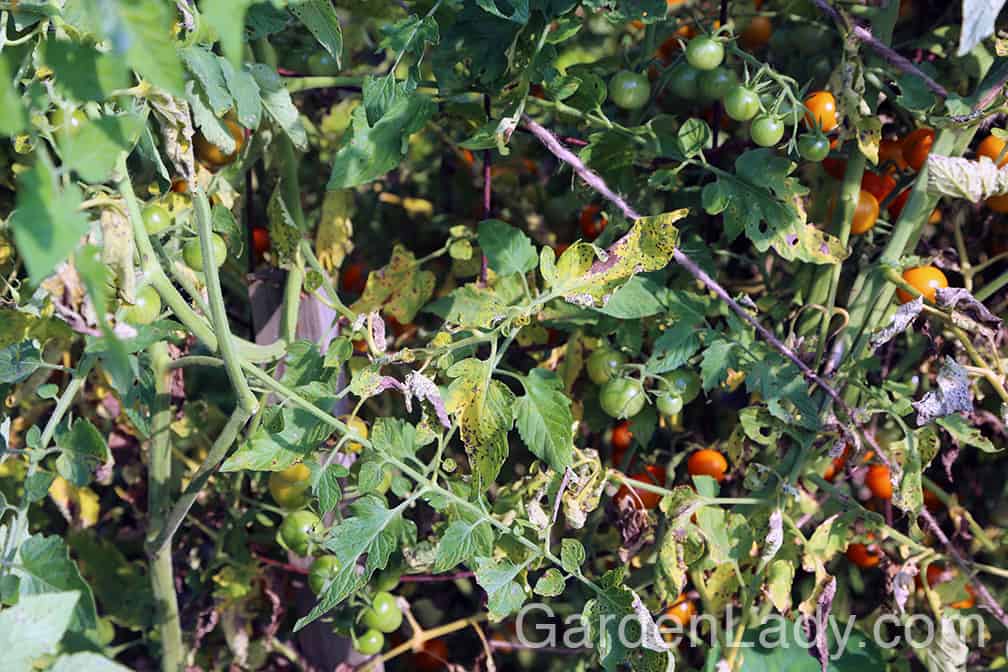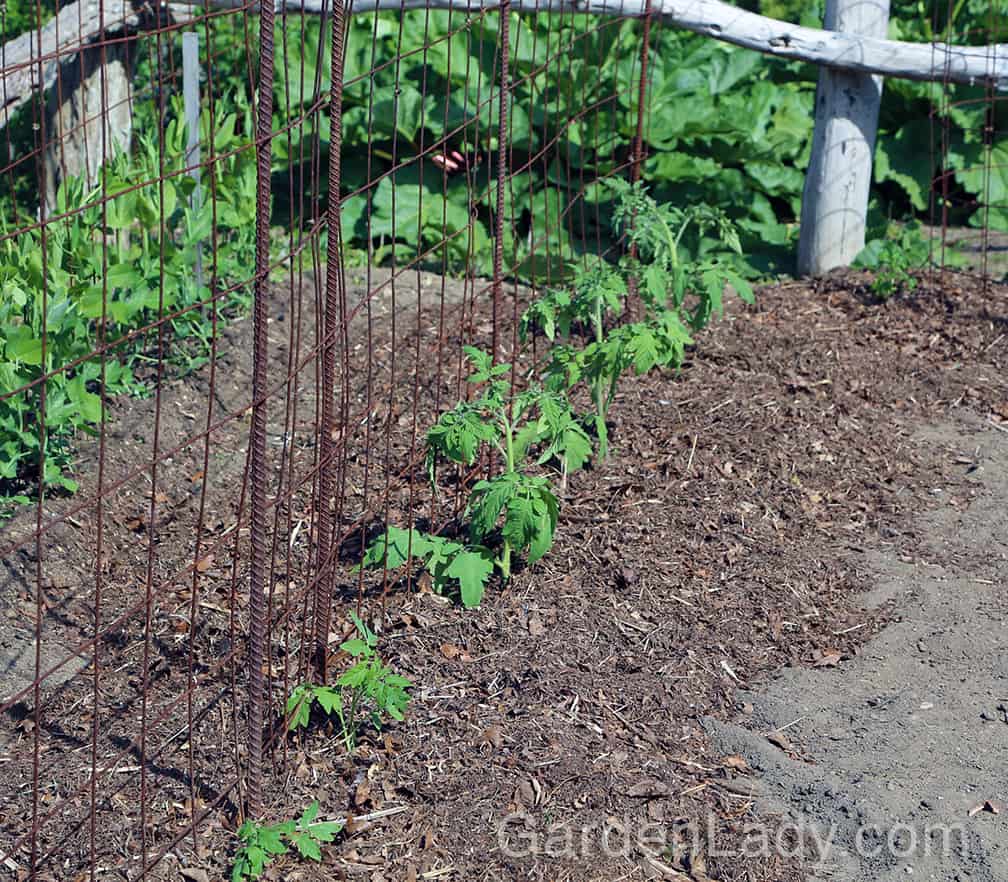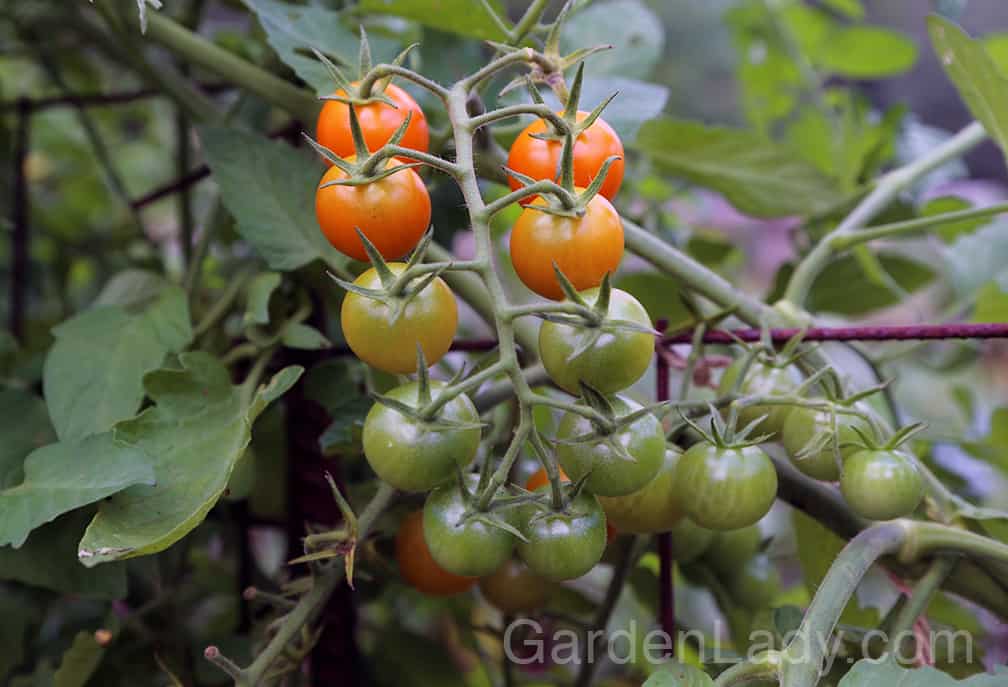I’ve often compared the garden to a party. We are blessed when we’re not depending on our landscape to provide all of our winter food, so why not view it as a celebration? That said, we want our summer veggie gardens to produce the fresh, flavorful tomatoes that make every meal a party. But those in the northeast can often find that celebration turns to frustration when the tomatoes get early blight.
If you’re celebrating the flavor of home grown tomatoes at your garden party, you just might find yourself dancing with early blight. This may not be the dancing partner you would have chosen, but sometimes disagreeable party guests are impossible to avoid, and we need to put up with them in order to continue to enjoy the celebration. Here’s how to move with the rhythms of this fungal disease and still harvest tasty tomatoes all season.

This is how early blight looks on a tomato plant. The lower leaves turn yellow and show black spots. This moves up the plants from bottom to top, killing the foliage. What’s a gardener to do? Here are the steps you need to master in order to dance successfully with early blight.

Start from day one! When planting your young tomato plants, remove the leaves that might touch the ground so that there are fewer opportunities for early blight fungus to make contact with the plant. Secondly, mulch around your newly planted tomatoes immediately. In our garden we use chopped leaves and pine needles – you can use the mulch of your choice, but apply it immediately after planting. Next, spray those newly planted tomatoes with the organic fungicide of your choice. Commonly available products include sulfur, or bacterial based formulations such as Serenade or Actinovate.

Spray every ten days to two weeks with the organic fungicide, making sure to coat stems, underneath leaves and the top of all foliage. Will this prevent the fungus? Of course not! All life forms will be partying down, so you can expect to see early blight in the conga line. Once you do, pull the spotted, yellow leaves off the plants as soon as possible and throw them away. Here are some of our tomato plants in late-August, after we’ve pulled the spotted or yellowed leaves off.

There are some tomatoes that aren’t as prone to early blight, of course. We’ve found that Sungold cherry tomatoes aren’t as prone to the fungus, and Mountain Magic are the most early-blight resistant plants sold.

Yes, it takes some effort to successfully dance with early blight and get good harvests of flavorful tomatoes. But it’s worth it. #tomatolove
A couple of other thoughts: there’s been great attention to heirloom tomatoes recently, but know this: although many heirloom (but not all) taste better, they are not disease resistant. Many heirlooms are very prone to early blight and bear fewer tomatoes over the course of the season. If you have the space, plant some heirlooms and some disease-resistant hybrids.
Also, know that every year in the veggie garden is different. Some years are warmer and drier and there are fewer fungal problems garden wide. Other seasons are cool and damp and the fungi abound.
In general, tomatoes love heat, rich, fertile soil and a deep soaking less often. In other words, don’t hand water or water too frequently.

Great tips! Getting heirlooms grafted onto blight resistant stock helps. Also, if it’s a severe problem, look to any tomato developed by the late Jim Baggett of Oregon State. There’s a couple of good ones. We’ve found rotating crops helps as well.
Did personally have better resistance with grafted tomatoes, Mary-Kate? I’m interested because I found the ones I planted were just as prone to EB as the non-grafted varieties. There has been such a buzz about grafted tomatoes, but in my garden they haven’t lived up to the hype…is it just me?
My experience with grafted tomatoes is that there’s no appreciable difference between them and the plants I started from seeds. I am a Brandywine fan, and I have had good luck with them, so long as I keep watching out for blight and treating as necessary.
Glad you chimed in on this, Leslie. I’m curious about what others have experienced with grafted tomato plants. Do they live up to the hype? What’s the real “word on the street?”